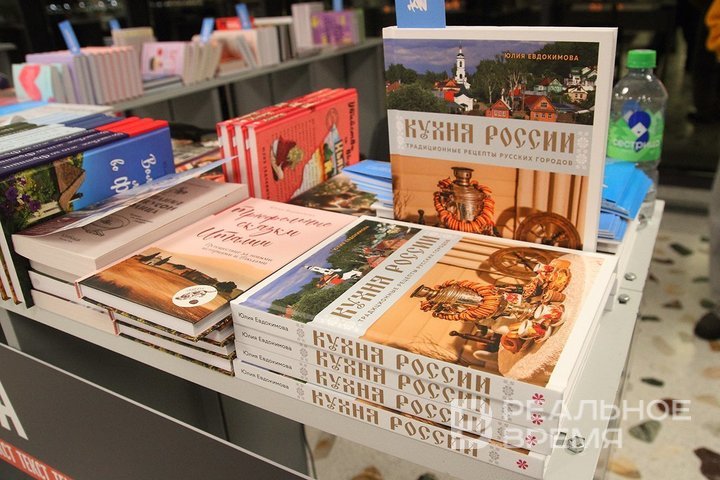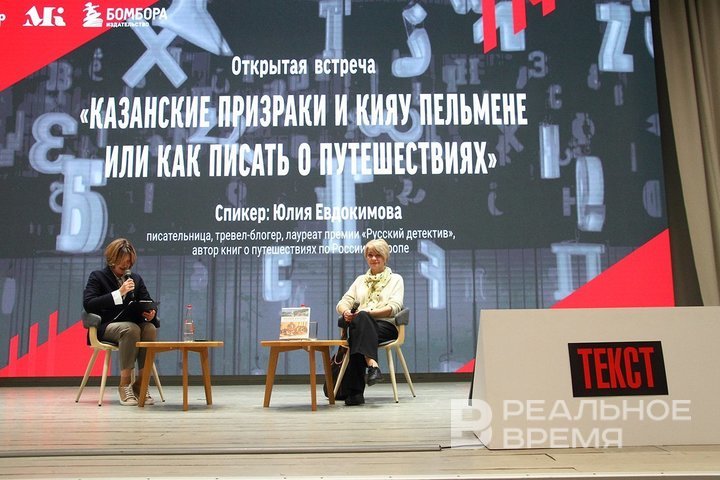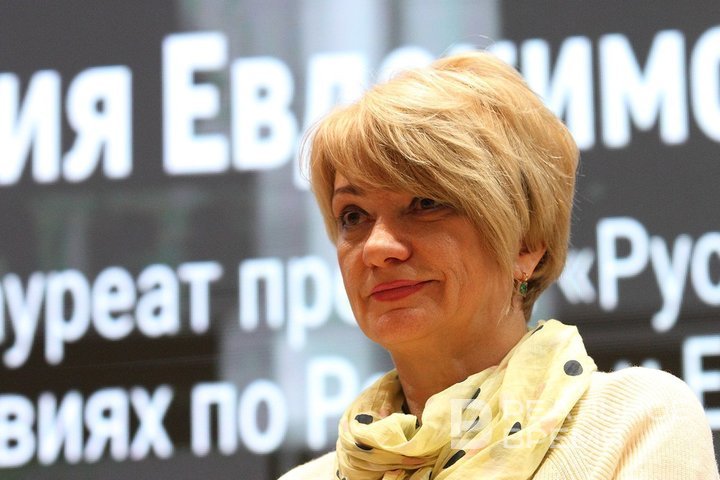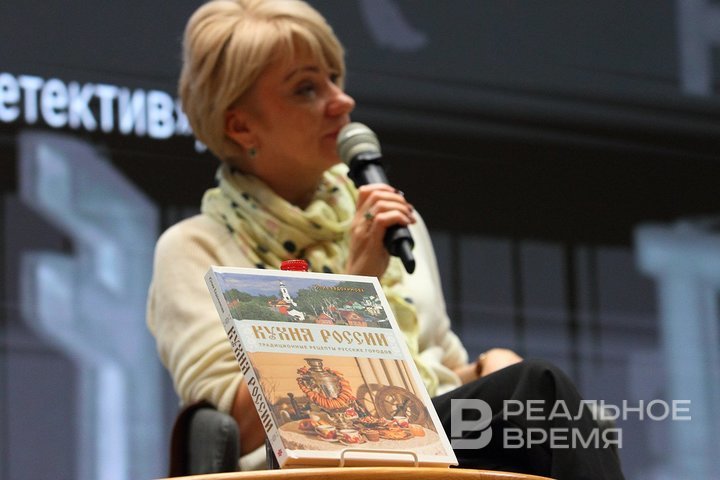Оchpochmak, chak-chak and chicken in milk: why save gastronomic memory?
Writer Yulia Yevdokimova on how Tatar cuisine helps shape Russian gastronomic culture

Yulia Yevdokimova, a writer, culinary researcher and expert in travel literature, spoke at Text book festival about how Tatar cuisine is woven into the overall gastronomic map of Russia. The writer, whose books inspire readers to explore countries and regions through food, shared her impressions of Kazan and thoughts on preserving traditions.
In search of the flavours of the past
“When the grandmothers leave, nothing will remain,” famous restaurant critic Yakov Mozhayev once gloomily noted, and Yulia repeated this phrase at a meeting in Kazan. The writer is convinced that much in regional cuisines has already disappeared, but this is not the end. She herself literally jumps on the last wagon collecting recipes that may disappear.
“I go to Orthodox Christian Old Believer villages, talk to grandmothers who tell me how they cooked. This is unique knowledge that you won’t find anywhere else. We are now trying to grasp something, to remember something,” the writer said.

“In Tatar cuisine, there are probably also dishes that are no longer cooked. For example, chicken in milk. It would be a shame if these recipes disappeared. I would like them to be preserved not only in memory, but also on our tables,” she emphasises. Yulia sees the mission of her work in this — the connection of the past with the present. She invites readers to look at food as a way to understand themselves and their heritage through books filled with recipes and stories.
Ochpochmak across the country
For Yulia Yevdokimova, gastronomy is not just food but a connection between generations. In this sense, Tatar cuisine seems especially significant to her: ochpochmak and chak-chak can be found in any bakery in Russia today. Yulia is sure that national cuisine is an integral part of the culture of the entire country. Tatar, for example, has already been included in the Russian gastronomic map. But its uniqueness lies not only in its recipes, but also in its spirit.
“Russian and Tatar cuisines are similar in the fact that we do not look for simmple ways. This is not Italy where pasta is sprinkled with basil, drizzled with lemon — and that’s it. Everything here is hearty, long, complex, and this is a special charm. Our dishes are problems for the stomach, for the pancreas, but at the same time it is always interesting,” added Yevdokimova.

She recalled her acquaintance with Tatar noodles back in Ulyanovsk Yulia is from. It was cooked by a woman who was known in the city as auntie. Her noodles were so delicious that they became almost a gastronomic revelation.
Yulia enthusiastically spoke about how individual dishes of Tatar cuisine spread throughout Russia. Ochpochmak, belish, kystyby — they are known and cooked in various parts of the country. “Chak-chak can be found in any sweet store, from the northern regions to the south. Although it is not always authentic, the very fact that this dish has become part of the general culture already says a lot,” said the writer.
For Yevdokimova, the cuisine of Tatarstan is a source of inspiration and inexhaustible stories. For example, the writer loved the gubadiya pie so much that it became almost a ritual: “Every time we left Kazan for Ulyanovsk, the driver and I stopped at Bakhetle store and I always bought gubadiya.”
Where the locals eat
Yulia Evdokimova is sure that the true soul of a city can be felt through its food. However, finding “your” place in an unfamiliar city is not an easy task. She recalled: “If you come to a new region, you need to visit the places where the locals eat. For example, in Tatarstan, you have a cafe on Bauman named Skazka, I think. Families have been going there since the 1970s. It’s a rarity! Of course, I included it in the book.”

The simple but cosy atmosphere of such places is a rarity. She noted that in Russia, establishments with a long history, alas, often do not stand the test of time, pandemics or economic difficulties. However, despite this, such corners still exist.
Evdokimova called Tyubetey chain a successful example for getting to know Tatar cuisine: “For tourists, it’s an ideal option: fast, inexpensive and with a touch of national cuisine.” Speaking about more expensive restaurants, she noted the problem of unification: “The same ‘gastronomic memes’ are everywhere now. Duck leg confit, Greek salad — they are in any restaurant, no matter what cuisine it belongs to. But the uniqueness is lost!” However, in Kazan, the national accent is still alive. That is why her books always include stories about local gastronomic treasures — such as Kazan’s Skazka.
Pelmeni for the Groom
The audience was especially interested in the story of “kiyau pelmeni” — small pelmeni, the name of which translates as “pelmeni for the groom.” Yulia told how she became acquainted with this dish: “It was ten years ago, in Kazan. The Italian ambassador, the business delegation and I went to a Tatar restaurant. The Italians saw the menu and were confused: fatty, filling, not to their taste. I suggested trying “pelmeni for the groom.” They were small, tender — an ideal choice. Then everyone came up to them and thanked them.”

Their tiny size charmed the Italian guests, and since then, Yevdokimova herself has fallen in love with them as a symbol of local cuisine that can be offered to a foreigner without fear of “overloading” with national characteristics. Yulia also touched on the topic of Kazan folklore, which inspires her work. She called the Kazan Cat one of the symbols of the city: “When the publisher put the Kazan Cat on the cover of the book, I asked why him. They told me: ‘He's a cutie.’ But cats in Russian mythology are far from cute purrs. The same Bayun Cat is a scary beast. Here is the Kazan Cat lying on Bauman with his belly up, but in reality he is quite a beast.”
This versatility of images, from cosy to dangerous, makes folklore an important part of her books. Yevdokimova stressed that national images are an integral part of any local culture, and Kazan is rich in such stories as the mythical snake Zilant or the same Kazan Cat. Each such detail turns the journey into a story that Yulia wants to tell people again and again.
Ekaterina Petrova is a book reviewer of Realnoe Vremya online newspaper, the author of Poppy Seed Muffins Telegram channel and founder of the first online subscription book club Makulatura.